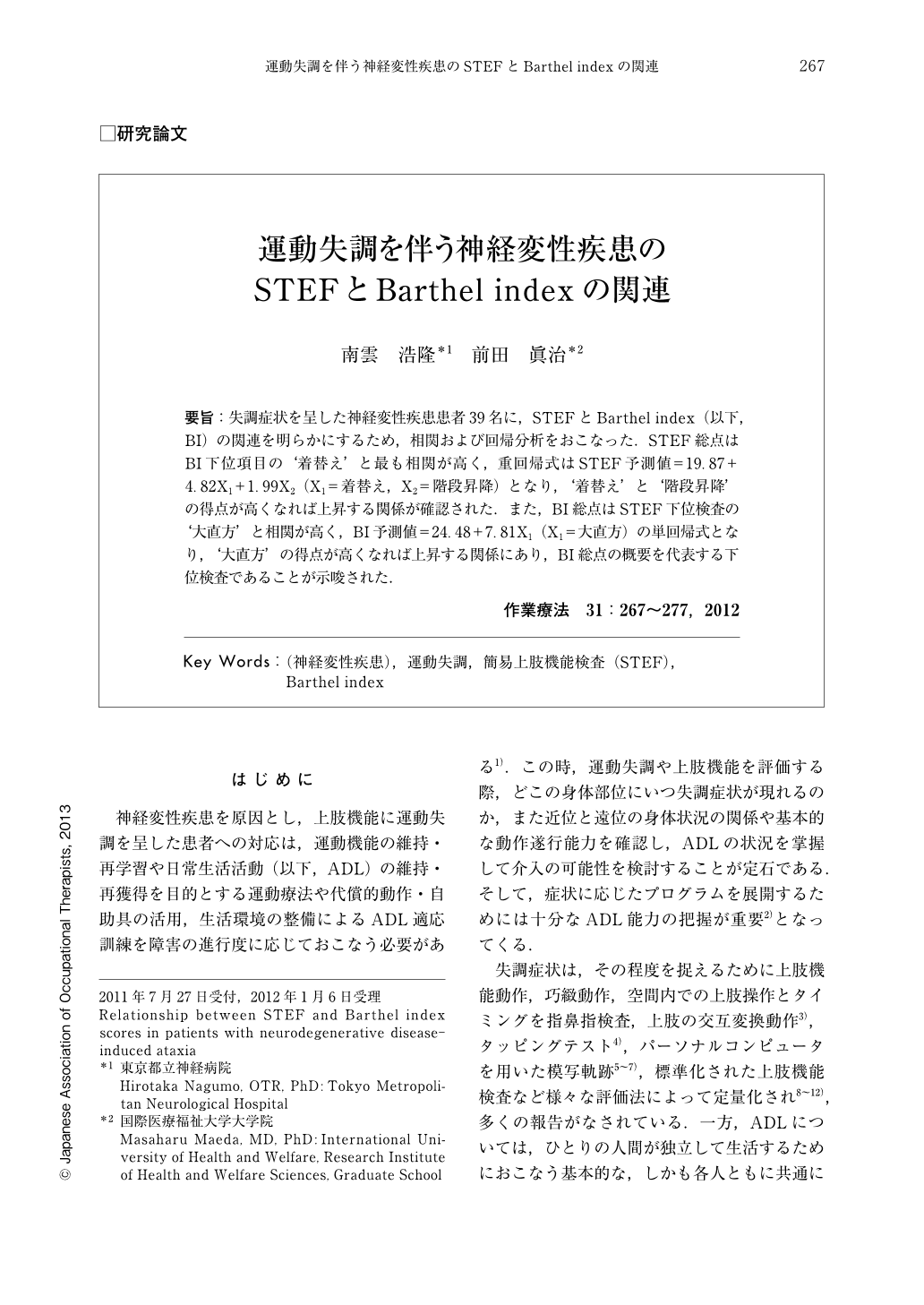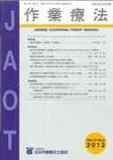Japanese
English
- 販売していません
- Abstract 文献概要
- 1ページ目 Look Inside
- 参考文献 Reference
- サイト内被引用 Cited by
要旨:失調症状を呈した神経変性疾患患者39名に,STEFとBarthel index(以下,BI)の関連を明らかにするため,相関および回帰分析をおこなった.STEF総点はBI下位項目の‘着替え'と最も相関が高く,重回帰式はSTEF予測値=19.87+4.82X1+1.99X2(X1=着替え,X2=階段昇降)となり,‘着替え'と‘階段昇降'の得点が高くなれば上昇する関係が確認された.また,BI総点はSTEF下位検査の‘大直方'と相関が高く,BI予測値=24.48+7.81X1(X1=大直方)の単回帰式となり,‘大直方'の得点が高くなれば上昇する関係にあり,BI総点の概要を代表する下位検査であることが示唆された.
Correlation and regression analyses were performed to examine the relationship between scores of the Simple Test for Evaluating Hand Function (STEF) and Barthel index (BI) in 39 patients with ataxia due to neurodegenerative disease. STEF scores were shown to be the most highly correlated with dressing as a BI subtest. In multiple regression analysis, the predicted values for the STEF were represented as [19.87+4.82X1+1.99X2] (X1: dressing; X2: climbing stairs); patients with high ability to dress and climb stairs exhibited high STEF scores. BI scores were shown to be the most highly correlated with moving a large rectangular block as a STEF subtest, and the predicted values for the BI in single regression were represented as [24.48+7.81X1] (X1: moving a large rectangular block); patients with high ability to move a large rectangular block showed high BI scores, suggesting that this subtest accurately reflects BI scores.

Copyright © 2012, Japanese Association of Occupational Therapists. All rights reserved.


